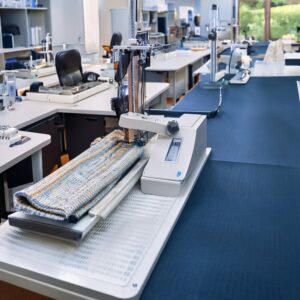Textile testing LIMS reports document the results of tests conducted on textile materials. These reports include detailed information on fabric properties such as strength, durability, colorfastness, shrinkage, and composition. They present the following key elements:
- Test Details: The type of tests performed (e.g., tensile strength, abrasion resistance).
- Sample Information: Data on the textile sample, such as batch number, fiber content, and source.
- Test Results: The numerical outcomes, including pass/fail criteria or comparisons to standards.
- Test Conditions: Information on the environment, such as temperature, humidity, and equipment settings.
- Observations and Notes: Comments or insights from the testing personnel.
- Quality Control: Data confirming the accuracy and reliability of the testing process.
Reports in Textile LIMS LLMS help manufacturers, laboratories, and regulatory bodies ensure quality control, product compliance, and optimized textile performance.




 These data points help track performance, ensure product quality, and maintain accurate records for further analysis.
These data points help track performance, ensure product quality, and maintain accurate records for further analysis.